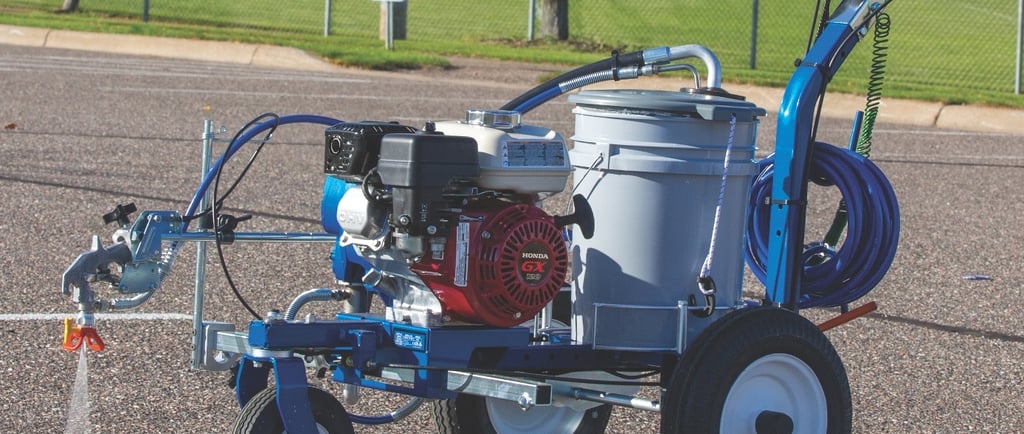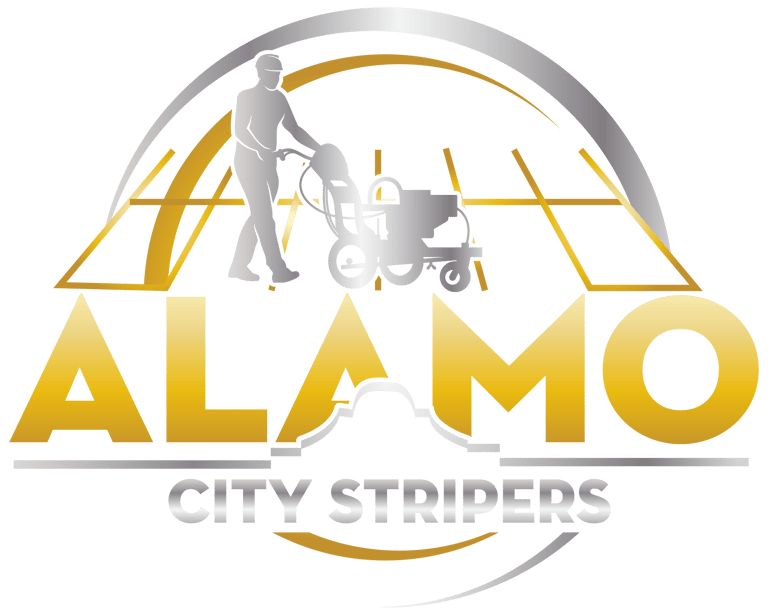Parking Lot Maintenance, Line Striping
Alamo City Line Striping
Line Striping in the Alamo City
HOME
Ty Jefferson
12/23/2023


A Day in the Life of a Line Striper
Hello, and welcome to my blog. My name is John, and I am a professional line striper. I have been in this business for over 10 years, and I love what I do. In this post, I will share with you some of the joys and challenges of being a line striper and give you some tips and tricks on how to do a great job.
What is a line striper?
A line striper is a person who paints lines on various surfaces, such as parking lots, roads, sports fields, and warehouses. Line striping is an important service that enhances the appearance, functionality, and safety of these spaces. Line striping can also be a creative and artistic activity, as you can create different patterns, colors, and designs with your stripes.
What do I need to be a line striper?
To be a line striper, you need to have some basic skills and equipment. Here are some of the things you need:
A line striping machine: This is the main tool that you use to apply the paint on the surface. There are different types and models of line striping machines, depending on the size and complexity of the project. Some of the most common ones are the Graco LineLazer123, the Titan PowrLiner4, and the Kelly-Creswell5. You can check out some reviews and demonstrations of these machines on YouTube124.
A paint: This is the material that you use to create the lines. There are different types and qualities of paint, depending on the surface and the durability you want. Some of the most common ones are the water-based acrylic, the solvent-based alkyd, and the thermoplastic6. You can also use different colors and additives to create different effects and finishes.
A pressure washer: This is a device that uses a high-pressure water spray to clean the surface before painting. This is an essential step to ensure proper adhesion and longevity of the paint. Pressure washing also removes any dirt, grime, or debris that might affect the quality of the striping7.
A measuring tape, a chalk line, a dot laser, and a line generating laser: These are some of the tools that you use to measure, mark, and align the lines on the surface. These tools help you to create accurate, straight, and consistent lines. They also save you time and effort by eliminating the need for chalk lines or string lines3.
A personal protective equipment (PPE): This is a set of items that you wear to protect yourself from any hazards or injuries while working. Some of the PPE that you need are gloves, goggles, boots, a respirator, a helmet, and a reflective vest8.
What are some of the challenges of being a line striper?
Being a line striper is not an easy job. It requires a lot of physical and mental work, as well as patience and attention to detail. Here are some of the challenges that I face as a line striper:
Weather: The weather can affect the quality and speed of the striping. For example, rain can wash away the paint, wind can blow dust or debris on the surface, and extreme heat or cold can affect the drying time and the durability of the paint. Therefore, I have to check the weather forecast and plan accordingly.
Traffic: The traffic can also affect the safety and efficiency of the striping. For example, cars, pedestrians, or animals can cross or block the area that I am working on, or cause accidents or damage to the equipment. Therefore, I have to use cones, signs, or barricades to secure the area and divert the traffic.
Customers: The customers can also affect the satisfaction and profitability of the striping. For example, some customers may have unrealistic expectations, change their minds, or complain about the price or the quality of the work. Therefore, I have to communicate clearly, listen carefully, and negotiate fairly with the customers.
What are some of the joys of being a line striper?
Despite the challenges, being a line striper is also a rewarding and enjoyable job. Here are some of the joys that I experience as a line striper:
Creativity: Being a line striper allows me to express my creativity and artistry. I can create different patterns, colors, and designs with my stripes, and customize them according to the customer’s preferences or the space’s purpose. I can also experiment with new techniques and materials, and learn from other line stripers.
Satisfaction: Being a line striper also gives me a sense of satisfaction and pride. I can see the results of my work immediately, and appreciate the improvement and transformation that I make to the space. I can also receive positive feedback and recognition from the customers and the public.
Variety: Being a line striper also offers me a lot of variety and flexibility. I can work on different types and sizes of projects, and face different challenges and opportunities. I can also choose my own schedule and location, and work independently or with a team.
What are some of the tips and tricks that I can share with you?
If you are interested in becoming a line striper, or if you want to improve your skills and knowledge, here are some of the tips and tricks that I can share with you:
Learn from the pros: The best way to learn and improve as a line striper is to watch and learn from the pros. You can find many videos, articles, and blogs on the internet that show you how to use the equipment, how to prepare the surface, how to apply the paint, and how to deal with the challenges. You can also join online forums, groups, or communities where you can ask questions, share experiences, and get advice from other line stripers .
Practice makes perfect: Another way to learn and improve as a line striper is to practice as much as you can. You can start with small and simple projects, and gradually move on to bigger and more complex ones. You can also practice on different surfaces, such as asphalt, concrete, grass, or wood, and use different types of paint, such as water-based, solvent-based, or thermoplastic. You can also practice on different weather conditions, such as sunny, cloudy, or rainy, and see how they affect the striping.
Be prepared and organized: A final way to learn and improve as a line striper is to be prepared and organized. You should always check the weather forecast, the traffic conditions, and the customer’s expectations before starting a project. You should also have a checklist of the equipment, the materials, and the tools that you need, and make sure that they are in good condition and ready to use. You should also have a plan of the layout, the measurements, and the markings that you want to create, and follow it as closely as possible. You should also have a backup plan in case of any problems or changes.
I hope you enjoyed reading this blog post, and learned something new about being a line striper. If you have any questions, comments, or suggestions, please feel free to leave them below. Thank you for your time and attention. 😊

